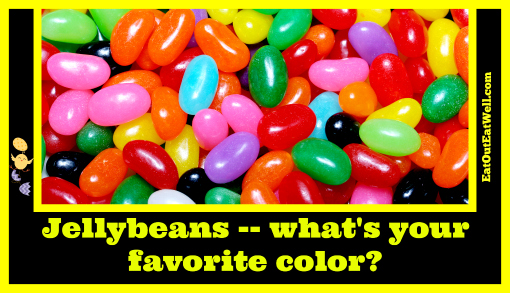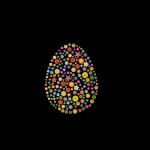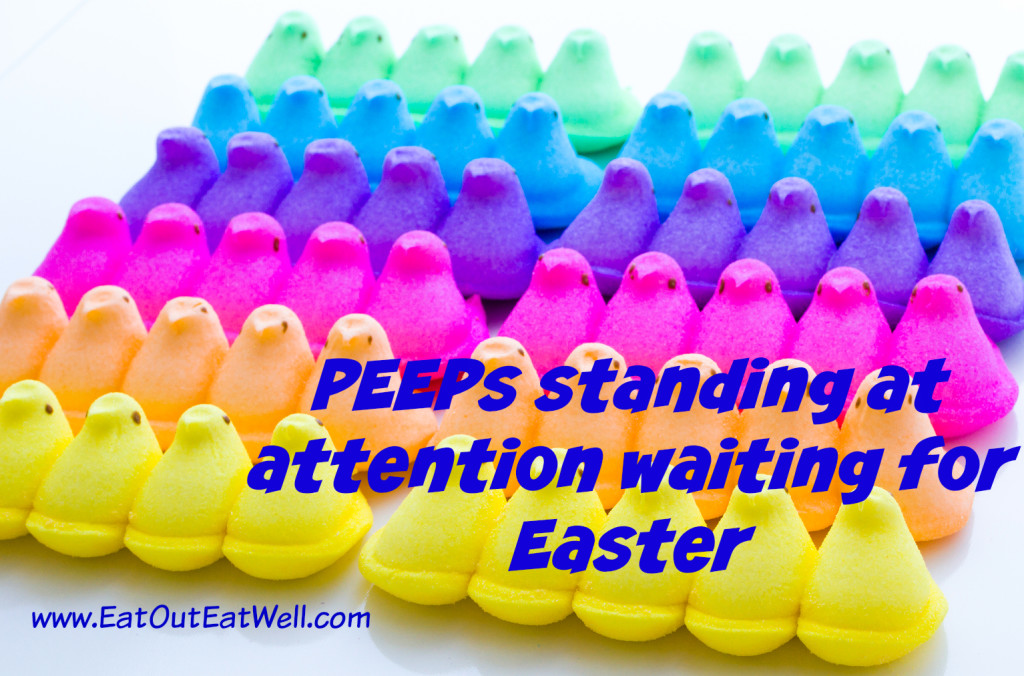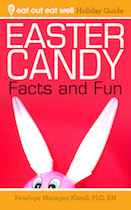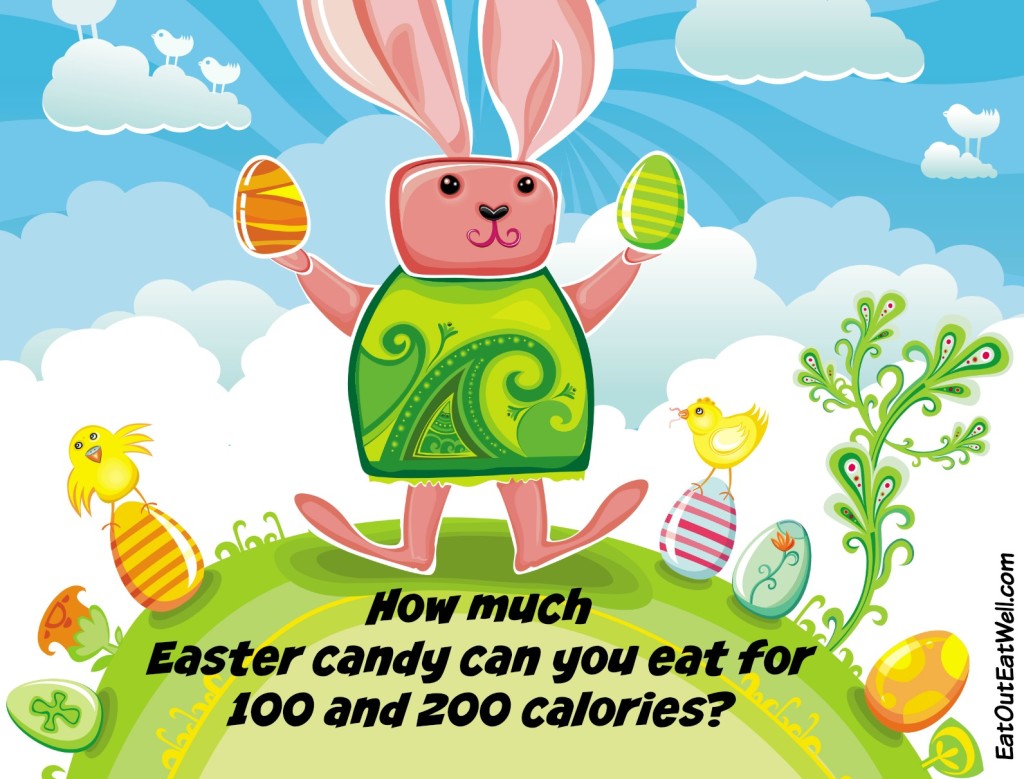
Peeps, jellybeans, and chocolate eggs are extremely popular types of Easter candy, but the National Confectioners Association says that on Easter, children head for chocolate Easter bunnies first.
No matter how old we are, we all have our preferred way of attacking the chocolate rabbit. Just so you know where you rank, 76% of us eat the ears first, 13% bite off the feet, and 10% go for the tail. Sixty-five percent of adults prefer milk chocolate; 27% prefer dark chocolate.
Bunnies aren’t the only chocolate treat of the season. Chocolate eggs — solid, hollow, decorated, candy-coated, and filled with sweetness – give the bunnies a race through the grass.
Easter Bunnies and Eggs – the Confectionary Type
Chocolate Easter eggs, along with chocolate bunnies, first made their appearance in the 1800’s. They can be found everywhere and at every price point, some decorated with flowers and others wrapped in foil. You can find them in chain stores, discount stores, high-end chocolatiers, and sitting in a bowl on just about every receptionist’s desk.
Easter is the second ranked holiday for candy purchases in the United States (just behind Halloween) and solid, hollow, and filled chocolate Easter eggs and chocolate bunnies are extremely popular choices.
Hollow and Solid Chocolate Easter Eggs
Today’s Easter eggs are mostly sweet chocolate made from cocoa solids, fat, sugar, and some form of milk. The first chocolate eggs were solid and made of a ground roasted cacao bean paste. Hollow eggs didn’t come on the scene until sometime later when a type of “eating chocolate” was developed. By the turn of the 19th century the improved process of making chocolate, along with newer manufacturing methods, made chocolate Easter eggs an Easter gift of choice.
Decorated with Flowers and Wrapped in Shiny Foil
John Cadbury developed the first French eating chocolate in 1842, but the first Cadbury Easter eggs didn’t arrive until 1875. A far cry from today’s Cadbury Crème egg, early Cadbury eggs were smooth surfaced dark chocolate filled with small silver candy balls called dragees.
Today’s Cadbury Crème Egg has a chocolate shell and a filling that’s a mix of white and yellow fondant made of sugar and water beaten into a crème. Since the first egg was made in the 1920s, new varieties include fillings of caramel, chocolate, mint, and peanut butter.
The average calories in popular types of chocolate Easter eggs:
Hershey’s
- Cadbury Chocolate Crème Easter Egg, 1 egg (39g): 180 calories, 8g fat, 25g carbs
- Cadbury Crème Egg, original milk chocolate with soft fondant crème center, 1 egg (39g): 170 calories, 6g fat), 28g carbs
- Cadbury Mini Eggs, 1 package (1.4 ounces): 190 calories, 9g fat, 27g carbs
- Cadbury Mini Caramel Eggs, 4 pieces (1.3 ounces): 180 calories, 9g fat, 23g carbs
- Cadbury Mini Egg, 12 eggs (40g): 200 calories, 9g fat, 28g carbs
- Milk Chocolate (foil) Eggs, 7 pieces (1.4 ounces): 200 calories, 12g fat, 24g carbs
- Candy Coated Eggs, 8 pieces (1.3 ounces): 180 calories, 8g fat, 27g carbs
Dove
- Silky Smooth Milk Chocolate Eggs, 6 eggs: 240 calories, 14g fat, 26g carbs
- Foil Dark/Milk Chocolate Eggs, 6 eggs (1.5 ounces): 230 calories, 14g fat, 26g carbs
Reese’s
- Milk Chocolate and Peanut Butter Eggs, 5 pieces (38g): 190 calories, 12g fat, 21g carbs
- Reese’s Pastel Eggs, 12 pieces (1.4 ounces): 190 calories, 8g fat, 25g carbs
- Reese’s Giant Peanut Butter Egg (whole egg, 6 ounces): 880 calories, 52g fat, 100g carbs
M&M’s
- Milk Chocolate Speck-Tacular Eggs: 1/4 Cup (12 pieces): 210 calories, 10g fat, 29g carbs
- M&M’s Peanut Butter Eggs, ¼ cup: 220 calories, 13g fat, 23g carbs
- M&M’s Pretzel Eggs, ¼ cup: 180 calories, 6g fat, 28g carbs
Snickers
- Original Peanut Butter Egg (1.1 ounce): 160 calories, 10g fat, 18g carbs
- Snickers Mini Filled Egg (0.9 ounce): 130 calories, 6g fat, 17g carbs
Russell Stover
- Caramel Egg (1 ounce): 130 calories, 6g fat, 19g carbs
- Truffle Egg (1 ounce): 140 calories, 8g fat, 15g carbs
Whoppers
-
Robin Eggs, 8 pieces (1.4 ounces): 180 calories, 5g fat, 3g carbs
- Mini Robin Eggs, 24 pieces (1.4 ounces): 190 calories, 5g fat, 35g carbs
Nestle
- Butterfinger Eggs, 5 pieces (1.5 ounces): 210 calories, 11g fat, 29g carbs
- Crunch Eggs, 5 pieces (1.3 ounces): 190 calories, 10g fat, 25g carbs
The average calories in popular types of chocolate Easter bunnies:
Solid Milk Chocolate Easter Bunny (2.5 ounces): 370 calories (average)
Dove Solid Chocolate Easter Bunny, whole bunny (4.5 ounces): 675 calories
Cadbury Solid Milk Chocolate Easter Bunny: 890 calories
Lindt Dark/Milk Chocolate Bunny (1.4 ounces): 225 calories
Sees Whole Bunny (4.5 ounces): 650 calories
Reese’s Peanut Butter/Reester, whole bunny (5 ounces): 720 calories
Russell Stover, whole bunny (4 ounces): 630 calories
Kosher Chocolate Candy
According to the Hershey Company website, Hershey’s candy coated milk chocolate eggs, chocolate crème eggs, peanut butter eggs, and all hershey’s kisses arel OUD.
How Much Easter Candy You Can Eat for 180 Calories or Less?
Most of us don’t need a reason to indulge on a holiday – it is a celebration, after all. But, just in case you want to “carefully” indulge on Easter candy, here’s how much of your favorite candy you can gobble down to the tune of 100 calories:
- 17 Brach’s jellybeans = 102 calories (6 calories each)
- 5 Peeps = 98 calories (28 calories for one Peep)
- 6 Cadbury mini eggs = 96 calories (16 calories for one mini egg)
- 2/3 of a Cadbury Crème egg = 100 calories (one egg is 150 calories)
- 5 Cadbury mini crème eggs = 100 calories (one Cadbury mini crème egg has 40 calories)
- 2/3 of a Cadbury caramel egg = 113 calories (one Cadbury caramel egg has 170 calories)
- 2 Cadbury mini caramel eggs = 90 calories (one Cadbury mini caramel egg has 45 calories)
- 2/3 Reese’s peanut butter egg = 113 calories (one Reese’s peanut butter egg has 170 calories)
- 5 Hershey’s milk chocolate eggs = 102 calories (one Hershey’s milk chocolate egg has 29 calories)
- 4 Reese’s Peanut Butter Mini eggs: 160 calories
